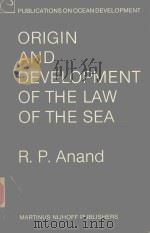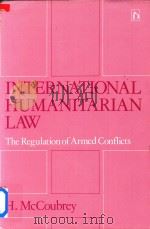《The law and regulation of international space communication》
| 作者 | 编者 |
|---|---|
| 出版 | Artech |
| 参考页数 | 309 |
| 出版时间 | 1988(求助前请核对) 目录预览 |
| ISBN号 | 0890062749 — 求助条款 |
| PDF编号 | 812906728(仅供预览,未存储实际文件) |
| 求助格式 | 扫描PDF(若分多册发行,每次仅能受理1册) |
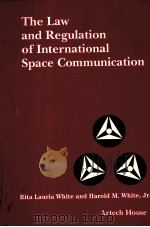
Part Ⅰ Background Information: Historical and Technical1
CHAPTER 1 RADIO AND THE GEOSTATIONARY SATELLITE ORBIT: THE RATIONALE FOR REGULATION3
1.1Introduction3
1.2 The Nature of Radio4
1.3 Radio and the Principle of Harmful Interference5
1.4 The Geostationary Orbit9
1.5 The Issue of Orbital Crowding10
1.6 Collision Probabilities in the GSO11
1.7 Area of Visibility, Service Area, and Coverage Area13
1.8 Frequency Congestion14
1.9Technologies and Techniques for More Effective Use of the GSO16
1.9.1 Signal Polarization16
1.9.2 Reverse Bandworking16
1.9.3 Advanced Antenna Design17
1.9.4 Orbit Sectorization18
1.9.5 Spectrum Segmentation19
1.9.6 Development of New Services19
1.9.7 Intersatellite Links19
1.9.8 Multiple-Access Techniques20
1.9.9 Use of Higher Frequencies21
1.9.10 Space Platforms and Multipurpose Satellites22
1.9.11 Regulatory Techniques22
1.10 Conclusion24
CHAPTER 2 THE INTERNATIONAL TELECOMMUNICATION UNION AND THE REGULATION OF RADIO: ORIGINS AND EVOLUTION29
2.1 Introduction29
2.2 The International Telegraph Union30
2.2.1The 1865 Paris Telegraph Conference30
2.2.2 The 1868 Vienna Telegraph Conference31
2.2.3 The 1871 Rome Telegraph Conference31
2.2.4 The 1875 St.Petersburg Telegraph Conference32
2.2.5 The 1885 Berlin Telegraph Conference33
2.3 The 1903 Berlin Preliminary Radio Conference33
2.4The International Radiotelegraph Union35
2.4.1 The 1906 Berlin Radiotelegraph Conference35
2.4.2 The 1912 London Radiotelegraph Conference36
2.5Post-World War I Non-Union Meetings39
2.5.1 The Radio Protocol of 191940
2.5.2 The 1920 Washington Preliminary Conference40
2.5.3 The 1921 Paris Technical Committee43
2.6 The 1927 Washington Radiotelegraph Conference44
2.7The International Telecommunication Union46
2.7.1 The 1932 Madrid Conferences46
2.7.2 The World War II Period49
2.7.3 The 1947 Atlantic City Conferences50
2.8 Conclusion57
Part Ⅱ Structure of the Space Communication Law-Making Process in the International Telecommunication Union63
CHAPTER 3 THE LAW-MAKING CONFERENCES OF THE INTERNATIONAL TELECOMMUNICATION UNION AND SPACE COMMUNICATION65
3.1Introduction65
3.1.1 Purposes of the Union65
3.1.2 Structure of the Union67
3.2The Plenipotentiary Conference67
3.2.1 The International Telecommunication Convention69
3.2.1.1 Structure of the Convention69
3.2.1.2 Major Provisions of the Convention70
3.2.2 Structure and Procedure of the Plenipotentiary Conference71
3.3 Administrative Support for Union Conferences72
3.3.1The General Secretariat72
3.3.2 The Administrative Council73
3.3.3 The Coordination Committee75
3.4Administrative Conferences75
3.4.1 Structure and Procedure of Administrative Conferences76
3.4.2 The International Radio Regulations78
3.5 Conclusion82
CHAPTER 4 JUDICIAL AND ADVISORY ORGANS OF THE INTERNATIONAL TELECOMMUNICATION UNION AND SPACE COMMUNICATION85
4.1Introduction85
4.2The International Frequency Registration Board86
4.2.1 Evolution of the Board87
4.2.2 Creation of the Board88
4.2.3 Legal Foundations of the Board89
4.2.4 The Master International Frequency Register92
4.2.5 Structure and Function of the Board96
4.3The International Radio Consultative Committee98
4.3.1 Establishment of the Committee99
4.3.2 Structure and Function of the Committee99
4.3.3 Space Radiocommunication and the Committee101
4.3.4 Challenges Facing the Committee103
4.4 Conclusion103
Part Ⅲ The Space Conferences107
CHAPTER 5 ITU CONFERENCES: 1959-1965 — LEGAL FRAMEWORK FOR SPACE COMMUNICATION ESTABLISHED109
5.1Introduction109
5.1.1 Scientific Cooperation Advances International Law110
5.1.2 Sputnik Challenges International Law112
5.2The 1959 World Administrative Radio Conference113
5.2.1 Early Space Communication Regulation Established114
5.2.2 The 1959 Space Communication Provisions Inadequate115
5.3 The 1959 Geneva Plenipotentiary Conference115
5.4The 1963 Extraordinary Administrative Radio Conference to Allocate Frequency Bands for Space Radiocommunication Purposes116
5.4.1 Events Leading Up to the 1963 Space Conference117
5.4.2Legal Principles Enacted at the Space Conference119
5.4.2.1 Full and Equal Legal Status for Space Services119
5.4.2.2 Equitable Access to Space Communication120
5.4.3Foundations of the Regulatory Regime for Space Communication121
5.4.3.1 New Space Services Defined122
5.4.3.2 Coordination Procedure Established122
5.4.3.3 Coordination of Earth Stations124
5.4.3.4 Coordination of Satellite Systems126
5.4.4 Preparation for the 1971 Space Telecommunications Conference128
5.5The 1965 Montreux Plenipotentiary Conference129
5.5.1 General Provisions Amended129
5.5.2 Resolutions, Recommendations, and Opinions130
5.6 Conclusion131
CHAPTER 6 ITU CONFERENCES: 1971-1977 — LEGAL PRINCIPLES FOR SPACE COMMUNICATION EXTENDED137
6.1 Introduction137
6.2The 1971 World Administrative Radio Conference for Space Telecommunications138
6.2.1 New Services Defined and Frequencies Allocated for Their Use139
6.2.2 Revision of Coordination, Notification, and Registration Procedures144
6.2.3 Resolution Spa 2-1 and Recommendation Spa 2-1148
6.2.4 The Issue of DBS: Resolutions Spa 2-2 and Spa 2-3149
6.2.5 Revision of Article 7 of the Radio Regulations to Accommodate DBS151
6.2.6 Overview of the Space Telecommunications Conference152
6.3The 1973 Malaga-Torremolinos Plenipotentiary Conference152
6.3.1 General Provisions Amended152
6.3.2 Resolutions, Recommendations, and Opinions154
6.4The 1977 World Administrative Radio Conference for the Planning of the Broadcasting-Satellite Service156
6.4.1 Agenda of the Conference157
6.4.2 The Broadcasting-Satellite Plan159
6.4.3 Planning for the Americas Deferred161
6.4.4 Coordination, Notification, and Registration of Frequency Assignments162
6.4.5 Efficiency Sacrificed for Equity164
6.5 Conclusion165
CHAPTER 7 ITU CONFERENCES: 1979-1983 — FROM PRINCIPLE TO PRACTICE171
7.1Introduction171
7.2The 1979 World Administrative Radio Conference173
7.2.1 Preparation for the Conference175
7.2.2 Revision of the Radio Regulations176
7.2.2.1 The 12 GHz Band: Interim Arc Segmentation Plan for Region 2 Replaced by Frequency Segmentation Plan177
7.2.2.2 Planning of the Feeder Links for the Broadcasting-Satellite Service179
7.2.2.3 The Fixed-Satellite Service180
7.2.3 Planning of the Space Services183
7.2.3.1 Resolution 2183
7.2.3.2 Resolution 3183
7.2.3.3 Working Group Six Ad-Hoc Two184
7.2.3.4 Resolution 3: Call for a Spectrum-Orbit Planning Conference185
7.2.4 From Technical to Political Forum186
7.3The 1982 Nairobi Plenipotentiary Conference188
7.3.1 General Provisions Amended188
7.3.2 Resolutions, Recommendations, and Opinions191
7.4 The 1983 Regional Administrative Radio Conference for the Planning of the Broadcasting-Satellite Service192
7.5 Conclusion194
CHAPTER 8 THE 1985 SPACE CONFERENCE — TO “GUARANTEE IN PRACTICE” EQUITABLE ACCESS TO SPACE COMMUNICATION201
8.1Introduction201
8.2The 1985 World Administrative Radio Conference on the Use of the Geostationary-Satellite Orbit and the Planning of the Space Services Utilizing It202
8.2.1 Agenda of the Conference203
8.2.2 Preparation for the Conference204
8.2.3 Conference Results205
8.2.3.1 The Arc Allotment Plan207
8.2.3.2 Regulatory Procedures209
8.2.3.3 Planning by Improved Procedures211
8.2.3.4 Planning Principles213
8.2.3.5 Provisions for Multiadministration Systems and the Issue of International Systems Separate from INTELSAT216
8.2.3.6 Incorporation into the Radio Regulations of the 1983 Direct Broadcast Satellite Plan for Region 2221
8.2.3.7 Planning of the Feeder Links for the 12 GHz Broadcasting-Satellite Service in Regions 1 and 3221
8.2.3.8 Recommendation Plen/B Relating to High Definition Television in the Broadcasting-Satellite Service222
8.2.3.9 Recommendation Plen/C Relating to Satellite Sound Broadcasting Systems for Individual Reception by Portable and Automobile Receivers222
8.2.3.10 Recommendation Plen/A: Draft Agenda for the Second Session of the Conference223
8.2.4Intersessional Studies225
8.2.4.1 Intersessional Duties of the International Frequency Registration Board225
8.2.4.2 Intersessional Duties of the International Radio Consultative Committee226
8.3 Conclusion226
Part IV Special Space Communication Topics233
CHAPTER 9 DIRECT BROADCAST SATELLITES AND THE EVOLUTION IN THE UNITED NATIONS OF INTERNATIONAL SPACE LAW235
9.1Introduction235
9.2 The Committee on the Peaceful Uses of Outer Space236
9.3The United Nations and the International Telecommunication Union237
9.3.1 The 1963 UN Space Law Declaration240
9.3.2 Initial Consideration of Direct Broadcast Satellites241
9.4 The 1967 UN Treaty on Outer Space241
9.5The Issue of Direct Broadcast Satellites243
9.5.1 Approaches to Direct Broadcast246
9.5.2 The Legal Impasse Surrounding Direct Broadcast248
9.6 Conclusion251
CONCLUSION: SPACE COMMUNICATION — TOWARD CULTURAL AND LEGAL CONVERGENCE IN THE GLOBAL VILLAGE255
Glossary267
Bibliography273
Index281
1988《The law and regulation of international space communication》由于是年代较久的资料都绝版了,几乎不可能购买到实物。如果大家为了学习确实需要,可向博主求助其电子版PDF文件(由 1988 Artech 出版的版本) 。对合法合规的求助,我会当即受理并将下载地址发送给你。
高度相关资料
-
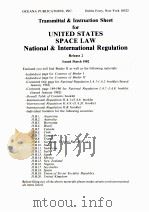
- UNITED STATES SPACE LAW NATIONAL&INTERNATIONAL REGULATION 1
- 1982 OCEANA PUBLICATIONS,INC.
-

- INTERNATIONAL REGULATION OF SATELLITE COMMUNICATION
- 1990 MARTINUS NIJHOFF PUBLISHERS
-

- INTERNATIONAL LAW AND THE USE OF FORCE
- 1993 ROUTLEDGE
-

- Studies In International Space Law
- 1997 Clarendon Press
-

- Readings in the economics of law and regulation
- 1984 Clarendon Press(Oxford University Press)
-
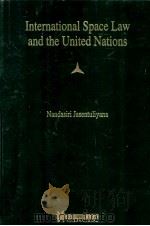
- International Space Law and the United Nations
- 1999 Springer
-
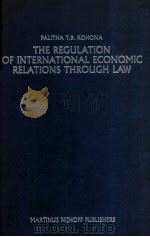
- The regulation of international economic relations through law
- 1985 M. Nijhoff Publishers
-
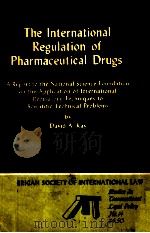
- THE INTERNATIONAL REGULATION OF PHARMACEUTICAL DRUGS
- 1976 PUBLISHED BY WEST PUBLISHING COMPANY
-
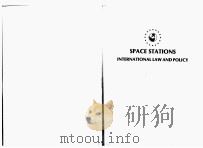
- SPACE STATIONS INTERNATIONAL LAW AND POLICY
- 1979 WESTVIEW PRESS
-

- SPACE ACTIVITIES OF THE UNITED NATIONS AND INTERNATIONAL ORGANIZATIONS
- 1986 UNITED NATIONS
-

- INTERNATIONAL SPACE LAW
- 1984 PRAEGER SPECIAL STUDIES
-
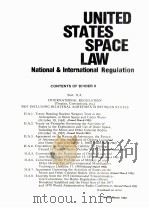
- UNITED STATES SPACE LAW NATIONAL&INTERNATIONAL REGULATION 2
- 1982 OCEANA PUBLICATIONS,INC.
-
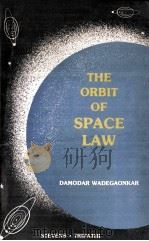
- THE ORBIT OF SPACE LAW
- 1984 STEVENS & SONS
提示:百度云已更名为百度网盘(百度盘),天翼云盘、微盘下载地址……暂未提供。➥ PDF文字可复制化或转WORD
